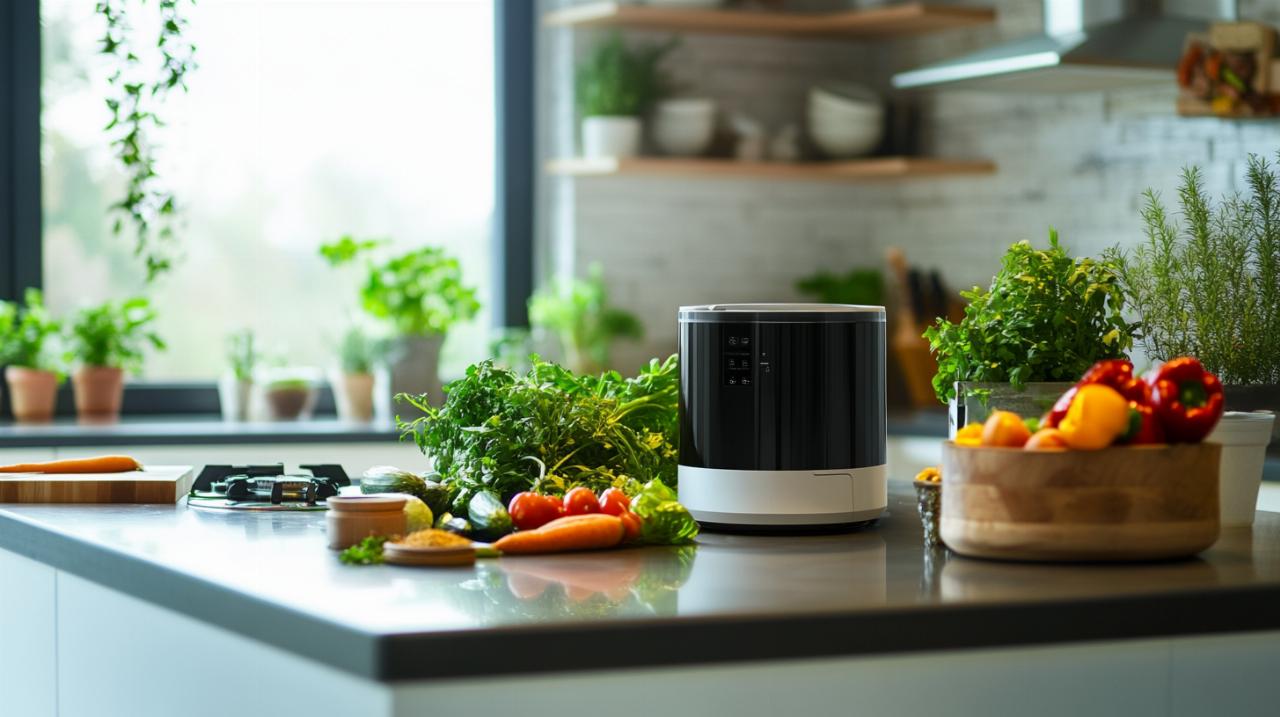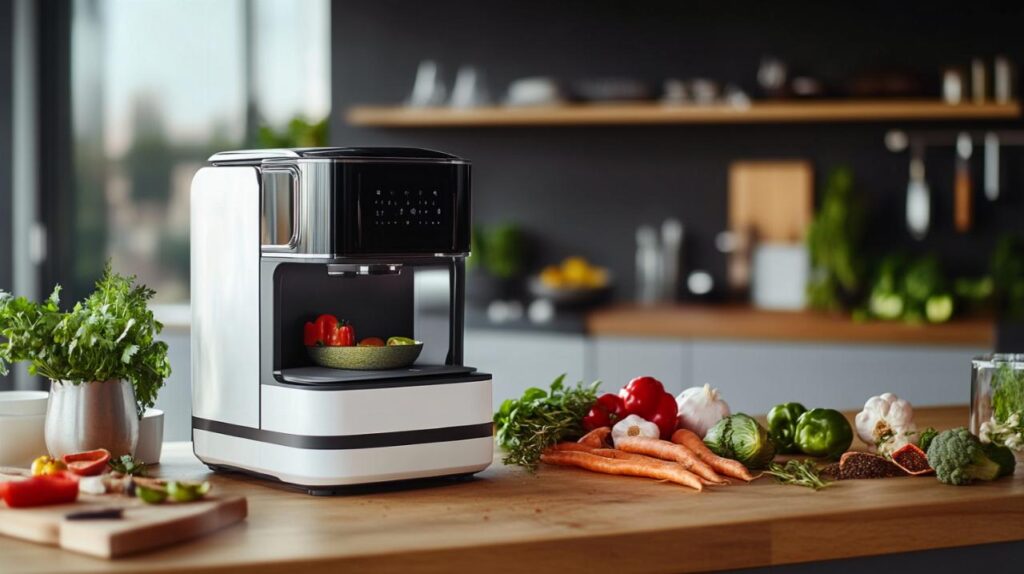Choosing a kitchen robot can transform your daily meal preparation, turning tedious tasks into effortless moments of culinary creativity. These innovative appliances offer a blend of technology and convenience, simplifying everything from chopping vegetables to slow cooking stews. With a vast array of models available, understanding your personal cooking style and household needs is the first step towards making an informed decision that suits both your lifestyle and your budget.
Understanding your kitchen requirements
Identifying essential functions and tasks
When considering a kitchen robot, it is crucial to think about the specific tasks you want the device to handle. Some models excel at blending and steaming, while others are designed for more comprehensive automation, including baking, sautéing, and even pressure cooking. The modern market offers multipurpose kitchen robots that combine robotic arms suitable for professional kitchens, as well as smart heating robots that adjust temperature settings automatically. End-to-end cooking robots can guide you through entire recipes, adding ingredients at the right moments and ensuring consistent results. If you frequently prepare one-pot meals or enjoy experimenting with international cuisines, a device with a broad range of cooking functions and a cloud recipe database may be ideal. For those who prefer quick weeknight dinners, a robot chef that offers automated cooking and voice control can save valuable time while promoting healthy eating habits.
Assessing family size and capacity needs
The capacity of a kitchen robot is another essential consideration, particularly if you are cooking for a large family or frequently entertain guests. Bowl size determines how much food you can prepare in a single batch, which is especially important for those who embrace batch cooking to streamline their week. A device with a generous capacity allows you to cook multiple portions at once, reducing the need for repeated cycles and saving energy. On the other hand, smaller households may benefit from a more compact model that does not occupy excessive counter space. It is also worth considering whether the robot can replace other appliances in your kitchen, thereby freeing up storage and simplifying your cooking setup. The balance between capacity and counter space is a practical factor that should align with your household's daily routines and meal preparation habits.
Setting a Realistic Budget for Your Kitchen Robot
Price Ranges and What to Expect
Kitchen robots vary widely in price, with options ranging from around three hundred pounds to well over fifteen hundred pounds. Entry-level models, such as the Mister Smart Kitchen from Lidl, are available at approximately three hundred and ninety-nine pounds and offer many of the core features found in higher-end appliances, although they may have a less refined finish and a less powerful motor. Mid-range devices like the Cookeo Touch from Moulinex, priced around three hundred and fifty pounds, focus on fast pressure cooking and are ideal for busy families seeking convenience. At the premium end of the spectrum, the Thermomix TM6, which costs nearly fourteen hundred and ninety-nine pounds, is renowned for its versatility, robust build, and access to a recipe library exceeding ninety thousand recipes via a Cookidoo subscription. The Magimix Cook Expert, a French-made model priced at around twelve hundred and ninety-nine pounds, is celebrated for its precision, multi-level cooking, and stainless steel bowl. Understanding these price ranges helps you set realistic expectations and identify which features justify a higher investment.
Balancing Cost with Quality and Features
While budget is a primary concern, it is equally important to evaluate the return on investment that a kitchen robot can offer. A higher initial cost may be offset by the device's ability to replace multiple appliances, reduce food waste, and save time on meal preparation. Models with advanced technology, such as AI cooking and computer vision, can adapt recipes in real time and ensure precise ingredient weighing, which promotes both consistency and waste reduction. Energy efficiency is another factor that contributes to long-term savings, as modern robots often use less power than traditional ovens and stovetops. When balancing cost with quality, consider the durability and warranty support offered by the manufacturer, as well as customer feedback highlighting reliability and ease of maintenance. A well-chosen kitchen robot can deliver significant value over the years, making it a worthwhile investment for those who prioritize convenience and healthy eating. To explore additional insights and reviews, you might want to visit shopline blog, where you can find expert advice on a wide range of kitchen technology and smart appliances.
Evaluating performance and specifications

Power output and capability assessment
The power output of a kitchen robot directly influences its ability to handle demanding tasks such as kneading dough, blending tough ingredients, and maintaining precise temperatures during cooking. A more powerful motor ensures that the device can perform efficiently without overheating or stalling, which is particularly important for those who plan to use the robot frequently or for extended periods. Many models feature cooking programmes that adjust heat and speed automatically, taking the guesswork out of complex recipes. The presence of a touchscreen interface and smart home integration further enhances usability, allowing you to control the device remotely or receive notifications when a dish is ready. When assessing performance, it is also helpful to review the cooking functions available, such as pressure cooking, steam cooking, and blend functions, to ensure the robot meets your culinary ambitions. A thorough evaluation of specifications helps you avoid common pitfalls and ensures that the appliance you choose is up to the task of meeting your household's demands.
Reading reviews and comparing models
Customer reviews are an invaluable resource when selecting a kitchen robot, as they provide real-world insights into the strengths and weaknesses of different models. Reading feedback from other users can reveal details about ease of cleaning, maintenance challenges, and the learning curve associated with the device's user interface. Comparing models side by side allows you to weigh the benefits of features such as a 3D cooking engine, guided recipes, and a recipe database against the overall cost and footprint of the appliance. For instance, the ChefRobot Ultracook, priced at around six hundred and forty-nine pounds, is known for its automation and user-friendly design, making it a popular choice for those new to cooking robots. Meanwhile, the CookingPal Multo stands out for its recipe variety and seamless smart home integration. By examining reviews and comparisons, you can identify which device aligns best with your cooking style and household needs, ultimately leading to a more satisfying purchase.
Accessories and practical considerations
Available attachments and add-ons
The versatility of a kitchen robot is often enhanced by the range of accessories and attachments that can be added to the base unit. Many manufacturers offer additional bowls, blades, and steaming baskets, allowing you to tailor the device to specific tasks and expand its functionality over time. Some models come with dedicated attachments for kneading, whisking, or even making pasta, which can transform the appliance into a comprehensive kitchen helper. When evaluating accessories, consider whether they are included in the initial purchase or if they must be bought separately, as this can significantly affect the overall investment. The availability of compatible meal kits and ingredient weighing accessories further streamlines meal preparation, reducing the time spent on measuring and portioning. A robot chef that supports a wide array of add-ons offers greater flexibility and ensures that the device can adapt to your evolving cooking needs and preferences.
Maintenance, cleaning, and user-friendliness
Ease of maintenance and cleaning is a critical factor that can influence your long-term satisfaction with a kitchen robot. Models with removable, dishwasher-safe components simplify the cleanup process, while those with complex assemblies may require more effort and time to keep hygienic. A user-friendly design, characterized by intuitive touchscreen controls and clear instructions, reduces the learning curve and encourages regular use. Some devices feature self-cleaning functions or non-stick surfaces that minimize residue buildup, which is particularly beneficial for busy households. Additionally, consider the availability of customer support and replacement parts, as these can be crucial for addressing any issues that arise over time. A kitchen robot that is easy to maintain and operate not only enhances your cooking experience but also ensures that the appliance remains a valuable asset in your kitchen for years to come. By prioritizing practical considerations alongside performance and features, you can select a device that truly meets your needs and enriches your culinary journey.


